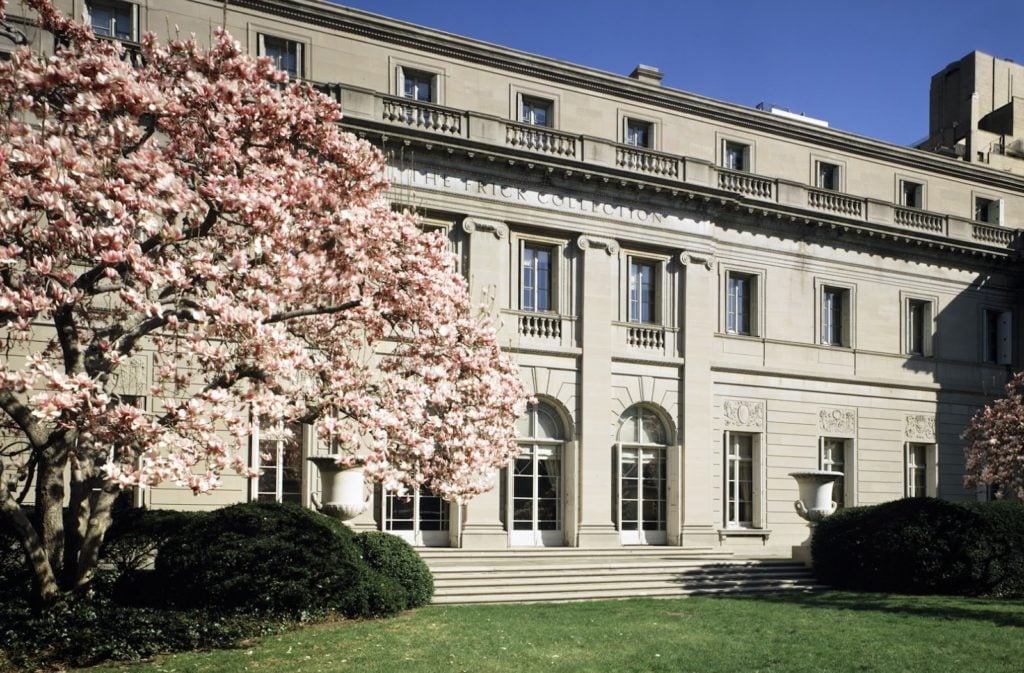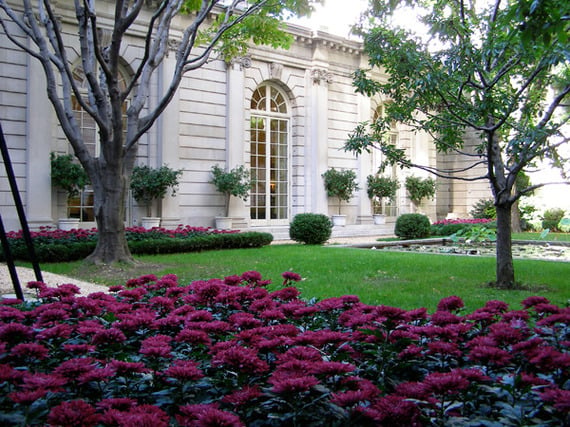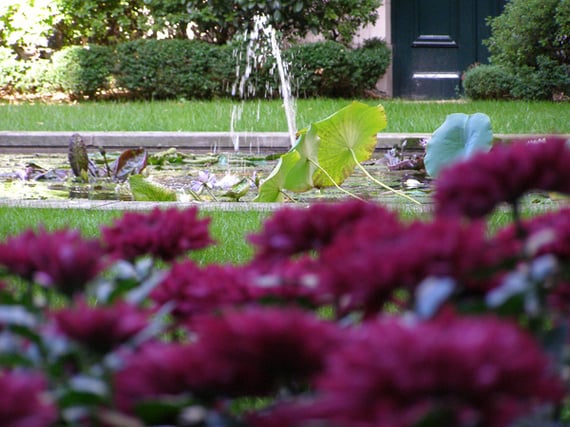Art & Exhibitions
The Frick Will Keep Garden as It Moves Forward With Long-Delayed Expansion Plans
It's looking for "a fresh approach."

It's looking for "a fresh approach."

Sarah Cascone

New York’s Frick Collection is one step closer to announcing the details of its new renovation plans, and is asking architecture firms to present their credentials. This past June, bowing to public pressure, the museum scrapped an unpopular earlier design, which would have controversially removed a gated garden by Russell Page.
“We commend the Frick Collection for committing to the on-going stewardship of their Russell Page-designed viewing garden on East 70th Street,” Cultural Landscape Foundation (CLF) founder and president Charles A. Birnbaum told artnet News. The garden is the only surviving New York work by the British landscape architect.

The Frick Collection Russell Page garden. Photo: Henk van der Eijk, via Flickr.
Preservationists were quick to criticize the proposal by architecture firm Davis Brody Bond—the team behind the new National September 11 Memorial Museum‘s interior—which would have created an addition mimicking the Beaux Arts style of the Frick’s original Gilded Age mansion.
“We heard everyone. We listened, and we have decided not to build on the garden site,” Ian Wardropper, director of the Frick, told the Wall Street Journal, describing the garden as “an important piece of late-20th-century landscape design by an acknowledged master of the form.”
Now, as the museum enters the next planning stage for the revised plan, “we’re looking at existing subterranean spaces and nonpublic spaces that could be utilized,” said Wardropper to the New York Times. “We’re at the point now where we want a fresh approach.”

The Russell Page garden at the Frick.
Photo: Henk van der Eijk via Flickr.
The Frick’s initial plans called for opening the Frick family’s former living quarters to the public for the first time, and the museum still hopes to make that dream a reality. The press release also announced the planned creation of a special exhibitions gallery in a “new space, contiguous to the permanent collection galleries on the main floor.”
Wardropper cited the success of major exhibitions, such as the current show on Flemish artist Anthony van Dyck, as part of the need for additional gallery space that would allow the permanent collection to remain in place year round. “We’re essentially a house that’s been retrofitted as a museum,” said Wardropper to the Times, noting that space constraints have only “become more pressing.”
The Frick will invite 20 architects to submit proposals on the project, and plans to chose one by the end of the year.